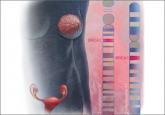From the Editor

What is the gynecologist’s role in the care of BRCA previvors?
Here, your patient’s options for surgery and your best options for her follow-up care and ongoing surveillance
EXPERT COMMENTARY
Mark D. Pearlman, MD, S. Jan Behrman Professor, Service Chief, and Director, Breast Fellowship in Ob/Gyn, Department of Obstetrics and Gynecology, University of Michigan Health System, Ann Arbor, Michigan.

Most deaths from breast cancer occur in women who are unscreened, according to this review of medical records and death data from two large hospitals in Boston—Massachusetts General and Brigham and Women’s.
Webb ML, Cady B, Michaelson JS, et al. A failure analysis of invasive breast cancer [published online ahead of print September 9, 2013]. Cancer. doi:10.1002/cncr.28199.
In 2009, the United States Preventive Services Task Force (USPSTF) released a controversial recommendation that breast cancer screening should routinely start at age 50 and be performed biennially.1 The Task Force further stated that the determination to screen women before the age of 50 “should take patient context into account, including the patient’s values regarding specific benefits and harms.”1
Although some professional societies have adopted this recommendation, others, including the American College of Obstetricians and Gynecologists (ACOG), have recommended that annual screening begin at age 40 in average-risk women.2
Related article: Is "overdiagnosis" of breast cancer common among women screened by mammography? Andrew M. Kaunitz, MD (January 2013)
With different professional societies lined up on both sides of this debate, practitioners and women remain confused about why different breast cancer screening guidelines exist in the United States.
Putting the study in context
A review of the data that informed the USPSTF recommendation demonstrate that routine screening mammography has similar efficacy in women in their fifth and sixth decade of life—a reduction in mortality of 16% and 15%, respectively.3 However, more mammograms need to be performed in women in their 40s than in women in their 50s to achieve that benefit. Moreover, because the specificity of screening mammography is less than ideal, about 10% of women are called back for additional imaging, and 10% of that population will undergo a biopsy. Only 30% of these biopsies will result in a diagnosis of cancer.
There has been considerable debate about the mortality improvement with routine screening mammography, including a nationwide administrative data review published in late 2012.4 This data-mining study suggested that routine screening mammography was only a minor contributor to the significant improvement in breast cancer mortality over the past 25 years.
Related article: Update on breast health Mark D. Pearlman, MD, and Jennifer L. Griffin Miller, MD, MPH (March 2013)
Details of the study
In this failure analysis from Massachusetts General Hospital and Brigham and Women’s Hospital, Webb and colleagues reviewed breast cancer deaths over 17 years (new breast cancer cases from 1990 through 1997, with cases followed through 2007). They compared the likelihood of death according to whether screening mammography had been performed in the preceding 2 years.
Of the 609 confirmed deaths from breast cancer, 71% occurred among unscreened women (ie, never screened or screening not done in the preceding 2 years). The median age at diagnosis of fatal cancers was 49 years, whereas women with breast cancer who ultimately died of other causes had a median age at diagnosis of 72 years.
Related article: Biennial vs annual mammography: How I manage my patients Andrew M. Kaunitz, MD (June 2013)
Webb and colleagues concluded: “Most deaths from breast cancer occur in unscreened women. To maximize mortality reduction and life-years gained, initiation of regular screening before age 50 years should be encouraged.”
WHAT THIS EVIDENCE MEANS FOR PRACTICE
The findings of Webb and colleagues are not surprising, given the already demonstrated reduction in breast cancer mortality with the use of routine screening mammography in women in their 40s. What is particularly interesting in this study is that the preponderance of breast cancer deaths occurred in younger women. Biologically, this may be explained by the more aggressive nature of breast cancer in younger women.5
This study provides additional support for the ACOG recommendation to routinely offer breast cancer screening with mammography for women aged 40 to 49 years.
--Mark D. Pearlman, MD
We want to hear from you. Tell us what you think.

Here, your patient’s options for surgery and your best options for her follow-up care and ongoing surveillance
Yes. According to this systematic review and two meta-analyses of observational studies, cosmetic breast augmentation adversely affects survival...

If a patient aged 50 and older asks to be screened every 2 years, I would support her choice, provided she is not at elevated risk for breast...
Study reports similar rates of advanced disease, and lower cumulative probability of false-positive results
A look at findings from the estrogen-alone arm of the WHI, chemoprophylaxis for high-risk women, and fertility preservation for young breast...

How does Dr. Kaunitz counsel women of different age groups and risk categories?
